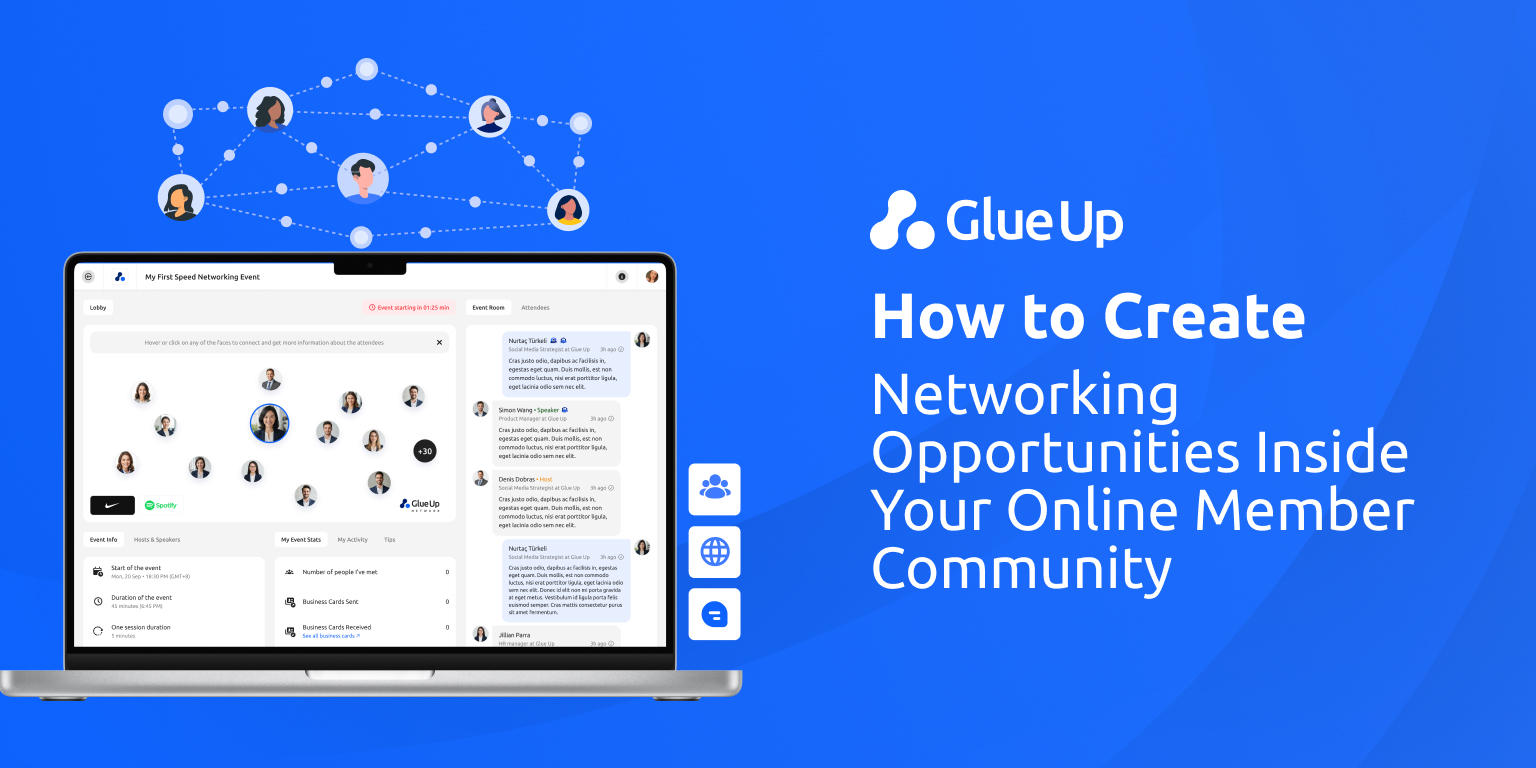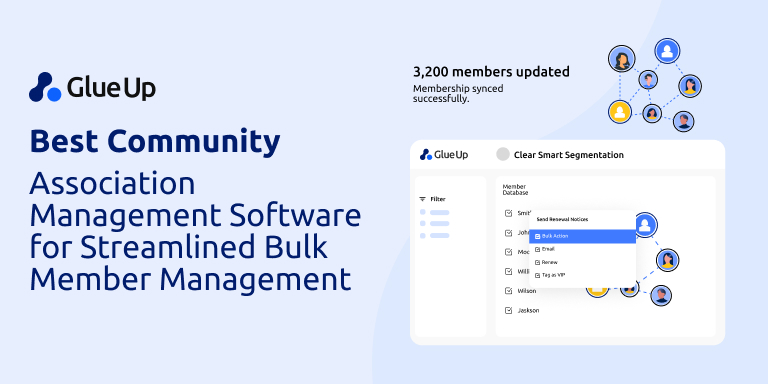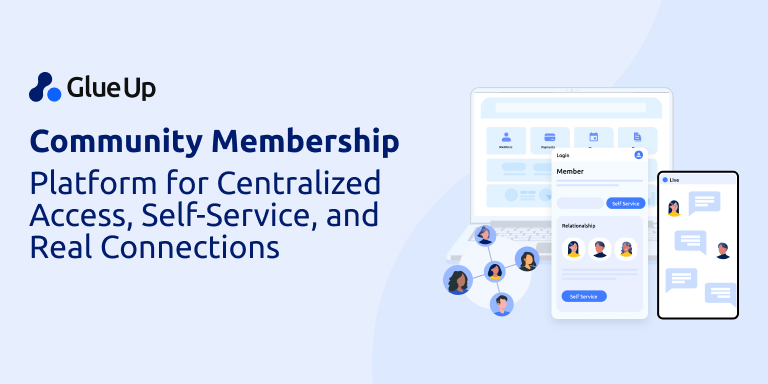![How to Measure Community Engagement for Member-based Organizations [With Smart Metrics, Data, and Tools] How to Measure Community Engagement for Member-based Organizations [With Smart Metrics, Data, and Tools]](/sites/default/files/2024-02/HowToMeasureCommunityEngagement.png)
If engagement is earned through human connections, then how do you measure those connections and measure the level of community involvement occurring within your organization?
Traditionally, community leaders have relied on tools that measure engagement in terms of activities rather than positive human relationships and sentiments towards the organization.
While online community engagement has been analyzed through the lens of likes, replies, followers, and other one-dimensional data points for years, the trend of engagement metrics and approaches that offer a more multidimensional perspective is now beginning to emerge.
This article will take a deeper dive into the engagement data that tells us more about human connections than just vanity metrics. We will also explore smart metrics, tools, and systems that are ideal for measuring engagement among community leaders.
Key Takeaways
- Community engagement is about fostering human connections and trust, not just measuring activity metrics. Look at qualitative touchpoints like the number of conversations and long-lasting connections.
- Use metrics like member lifetime, survey response rates, and member referrals to measure engagement depth and see how invested members are.
- Smart metrics connect community engagement to organizational goals. Examples are correlating community ideas with media mentions, tracking event registrations, and linking new product features to community feedback.
- Look beyond just daily/weekly/monthly active users. Also consider metrics like average session length, user-generated content rates, content moderation rates, and net promoter scores.
- Use a community management platform like Glue Up to bring all your metrics together into interactive dashboards. This allows you to measure and manage community engagement from a central location.
Tracking Community Engagement - It's About People, Not Numbers
Many community managers think that tracking community engagement is all about numbers. The truth is, it is more about human connections and trust.
The key to keeping members engaged throughout the membership journey is to foster shared experiences and authentic human connection. It is about building online communities by inspiring and encouraging members to take an active role (instead of passively participating). Instead of transactional communication, it focuses more on member loyalties and a sense of belonging.
Therefore, the best way to measure community engagement is through touchpoints and data that answer these questions:
- How many conversations are members having?
- What percentage of members are forming long-lasting connections?
- How many members are posting in the community space? If so, how effective are they?
- What percentage of community members are responding to other members' posts?
By analyzing these touchpoints, you can do more than just count the number of community members and get a sense of the actual community engagement happening.
Using Community Health as a Measure of Community Engagement

You can move into engagement depth by digging deeper than just vanity metrics (appealing statistics that do not provide insight into community performance).
Engagement depth allows you to examine metrics such as:
- How many long-term members do you have in your community?
- Who responds positively to community surveys (or constructively)?
- Who refers others to your community?
Using these matrices, we can gain a deeper understanding of how invested your members are and if they are receiving any value from your community.
Smart Community Engagement Metrics That Reflect the Community’s Impact on Your Organization’s Goals
Here are some metrics to consider for measuring community engagement as well as communicating and illustrating its impact on your organization.
Thought Leadership
When it comes to establishing thought leadership in your industry, you might want to do some analysis and see how many media mentions and links correlate with your community's ideas, concepts, and discussions.
Use Google Search Console to analyze the number of search queries associated with your brand (especially those associated with the thought leadership content you've shared).
The use of these tactics to build a brand by engaging in community activities provides tangible evidence that a brand has been built.
Event Registrations
For most community engagement, you need your community to register to participate (for example, events). By doing so, you not only validate your data but also have avenues for further communication and feedback.
Read more: 4 Effective Strategies to Gather Member Feedback for Associations
Measuring how many registrations you receive during your engagement period is a great way of assessing your engagement success. By tailoring your registration process to gather more information, you are able to segment your data and communications more effectively.
For example, you can create customized event registration forms and add questions about demographics, interests, or habits to build a more complete picture of your audience.
Average Session Length
Average session length refers to the amount of time your members spend in your community space in one session.
A longer average session length indicates that members are finding something useful in their community. They may be sharing their thoughts or simply enjoy reading and interacting with other people's content. Conversely, if your average session length is short, your members may not be getting enough value from your community.
Retention

You can analyze retention and revenue through community engagement metrics and tracking in two ways.
You can either measure the average lifetime of members as well as their churn rates. In a community that focuses on ideation, feedback, and market research, you can also track how many new features came from your community to measure your retention.
Read more: How to Reduce Membership Churn and Increase Retention Rate?
Sentiments
Many people think that sentiments are limited to 'positive or negative', but there is much gray area not discussed. While some software programs can assist in analyzing sentiment, human insight is still needed to understand this gray area.
When analyzing community engagement metrics (and proving that your community's sentiment is beneficial to your organization), you should quantify your qualitative data without losing sight of the human element. How? Group comments and feedback according to similar sentiments, and provide real-life examples in your report to support your data.
Activity (Daily, Weekly, and Monthly Active Users)
As the name implies, this is the most classic way of assessing engagement - how many surveys were completed, how many events were attended, etc. However, it also takes into account the number of decisions your focus group makes.
You can further divide the activity into three metrics:
- DAUs: Unique visitors to your community space on a particular day.
- WAUs: Unique visitors to your community space in a given week.
- MAUs: Monthly unique visitors to your community space.
Activity is a go-to metric for all communities. It instantly shows you how many people have interacted with your membership site or visited your community space within the time period that is most relevant to you.
By using that information, you can get an overview of how usage and visits are trending. Are you gaining popularity and growing your community? Or are your members losing interest?
However, activity alone cannot give you an understanding of engagement depth. You won't know how much time distinct users have spent engaging with your community or what actions they have taken. To understand the depth of engagement, make sure to use activity in conjunction with other metrics, such as session length and retention rates.
Percentage of User-generated Content (UGC)
A truly engaged audience will want to share their ideas and thoughts. Thus, UGC is a great way to gauge how engaged they are. It is the percentage of your community’s content that’s published by the community members.
Here is the formula to calculate your UGC rate over time:
UGC - Posts published by members of the community in a given time period HOST - The total number of posts published by the community host during the same period
To calculate the Rate of UGC: Rate of UGC / (UGC + HOST) x 100 = Rate of UGC (%)
Example:
Suppose you created 100 posts in February, and your community created 1000 posts in February.
Now, your UGC rate will look something like this:
S1000 / (1000 + 100) x 100 = 90% UGC Rate
Thus, a UGC rate tells you:
- In what proportion do members participate in the community enough to publish their thoughts and share their opinions/experiences with other members?
- How are your members interacting with each other's content?
Your engagement statistics and the number of shares on your posts can be seen on social media or in private communities. You can also check Google Alerts to find out where your posts are getting mentions.
Inappropriate Posts Reported (Content Moderation)
Content moderation is an essential part of community management, and this metric helps you determine how much moderation is needed.
Providing a safe and welcoming environment for your members is your responsibility as a community host. Thus, monitoring flagged posts can help you determine your community’s interests and remove the posts unliked or reported by them.
Note, however, that sometimes users report each other's content for the wrong reasons. Perhaps the content isn't inappropriate, but it presents a conflicting view or opinion to the person reporting it.
This can sometimes result in an inaccurate metric that suggests more inappropriate content than is actually occurring. Yet, we always recommend tracking it and checking it to ensure your members' satisfaction.
Member Acquisition
Referrals and new member acquisition are great ways to measure community engagement.
Member acquisition refers to how many new members you've acquired in a certain period of time and how you acquired them.
Additionally, it can refer to the number of new leads generated by your community. This includes the number of new members who join after being referred by existing members and then finding out how many join as a result.
Queries
While you know your organization inside out, your members may not. Monitoring how many queries you receive on your engagement can help you identify gaps in communication, and areas that need more explanation, or improvement.
Net Promoter Score (NPS)
The Net Promoter Score (NPS) serves as a fundamental measure of customer sentiment and member satisfaction, and its significance is underscored by the fact that two-thirds of the Fortune 1000 now employ it.
This community engagement metric operates through a single-question survey, where participants rate their likelihood to recommend your organization on a scale of 0 to 10.
- Participants who choose 9-10 are labeled as promoters, signifying satisfaction and a likelihood of recommending your organization.
- Participants with a score of 7-8 are considered passives, indicating contentment but less inclination to promote.
- Participants with a score of 0-6 are identified as detractors, representing unhappy customers.
The NPS is then calculated by subtracting the percentage of detractors from the percentage of promoters.
This straightforward calculation indicates the overall customer sentiment and member satisfaction with your organization, making the NPS a pivotal tool in assessing and enhancing your organizational success.
Social Media Mentions
Social media mentions are invaluable for gaining insights into customer sentiments about your organization. Various tools are available to track the number of mentions, enabling you to understand the conversations surrounding your brand.
This information reveals why people are talking about your organization, whether positively – such as expressions of liking or recommendations to others – or negatively, involving criticism or disapproval.
Regardless of the sentiment, monitoring social media mentions allows you to analyze public opinion and understand the prevailing sentiment around your organization.
Time to First Post/Participation
The "Time to First Post/Participation" (TTFP) metric measures the duration it takes for a member to make their first contribution, whether it's a public post, query, comment, or any other form of participation.
This community engagement metric is a valuable indicator of your members' eagerness and willingness to engage. By analyzing TTFP, you gain insights into the excitement and interest your organization generates as members actively participate. Participation can encompass actions like appreciation and liking.
Monitoring TTFP provides valuable insights into the dynamics of member engagement and helps assess your organization's overall impact and reception within the community.
Collaboration Rate
The collaboration rate is a crucial metric that provides insights into the extent to which your members engage in collaborative activities within your organization.
These activities may include joint projects, co-creation initiatives, knowledge-sharing endeavors, and mutual support efforts.
By assessing the collaboration rate, you understand how actively and effectively your members participate in and contribute to collaborative ventures.
This metric serves as a valuable indicator of the overall collaborative culture within your organization, shedding light on the member engagement levels of joint initiatives and cooperative endeavors.
Gamification Score/Badges
Through Gamification Scores/Badges, community engagement can be effectively utilized. It involves rewarding members who actively contribute with gifts, points, scorecards, or badges.
This gamified approach not only encourages participation but also serves as a valuable tool to analyze the level of engagement among members.
By identifying the most active contributors, you can gain insights into your community dynamics, recognizing and appreciating those who play a significant role in the engagement and growth of your organization.
Poll Participation Rate
The Poll Participation Rate is a metric that indicates the percentage of members engaging in the poll you created.
For example, if there are 1000 members and 600 actively participating in a poll, the poll participation rate would be 60%.
This metric provides valuable insights into the level of community engagement, offering a quantitative measure of how many members are actively contributing their opinions and feedback through polls.
Monitoring this rate proves to be an effective way to analyze and assess the overall engagement of your community.
Member Influence Score
To gain a comprehensive understanding of individual member engagement and impact within your community, consider implementing a Member Influence Score. This composite metric combines various engagement factors to provide a holistic view of each member's contribution and influence.
Here's how to create and use a Member Influence Score:
- Select key engagement factors: Choose 5-7 metrics that best represent engagement in your community. These might include:
- Frequency of participation (posts, comments, reactions)
- Quality of contributions (measured by likes, shares, or staff ratings)
- Longevity of membership
- Event attendance
- Referrals made
- Mentorship or leadership roles taken
- Assign weights: Determine the relative importance of each factor and assign weights accordingly. For example:
- Participation frequency: 25%
- Contribution quality: 30%
- Longevity: 15%
- Event attendance: 10%
- Referrals: 10%
- Leadership roles: 10%
- Normalize scores: Convert each factor into a score on a common scale (e.g., 0-100) to ensure fair comparison.
- Calculate the composite score: Multiply each normalized score by its weight and sum the results to get the Member Influence Score.
- Analyze and act: Use the Member Influence Score to:
- Identify top influencers in your community
- Recognize and reward highly engaged members
- Target less engaged members for personalized outreach
- Track changes in engagement over time
- Correlate influence scores with other metrics like retention rates or NPS
- Refine over time: Regularly review and adjust the factors and weights based on your community's evolving needs and goals.
By implementing a Member Influence Score, you gain a nuanced understanding of engagement that goes beyond simple activity metrics. This approach allows you to identify and nurture your most valuable community members, while also providing a clear pathway for less engaged members to increase their involvement and impact.
Measure All Community Engagement Metrics in One Place
Measuring each of these metrics is imperative for organizations that want to get closer to their members, at both the community and individual levels.

Glue Up community management software is a private digital hub that makes it easy to engage and track your community engagement. It fosters relationships between members by allowing them to share knowledge, create posts, and organize events. With the new 1-on-1 chat and business card sharing option, they can build connections and long-lasting relationships.
The platform consists of a CRM that analyzes all the interactions and activities in your member community. It allows you to gain instant visibility, engagement, and performance with interactive dashboards and profiles.
The platform comes with two convenient apps, one for the organization and the other for your members. The first app, My Glue helps your members stay connected and informed. The Glue-Up Manager app allows you to manage your operations, view analytics, and sync your member engagement data to the cloud with just one click.
Interested in finding out more about our all-in-one membership management solution? Get a demo today and start measuring your community engagement with one click!



